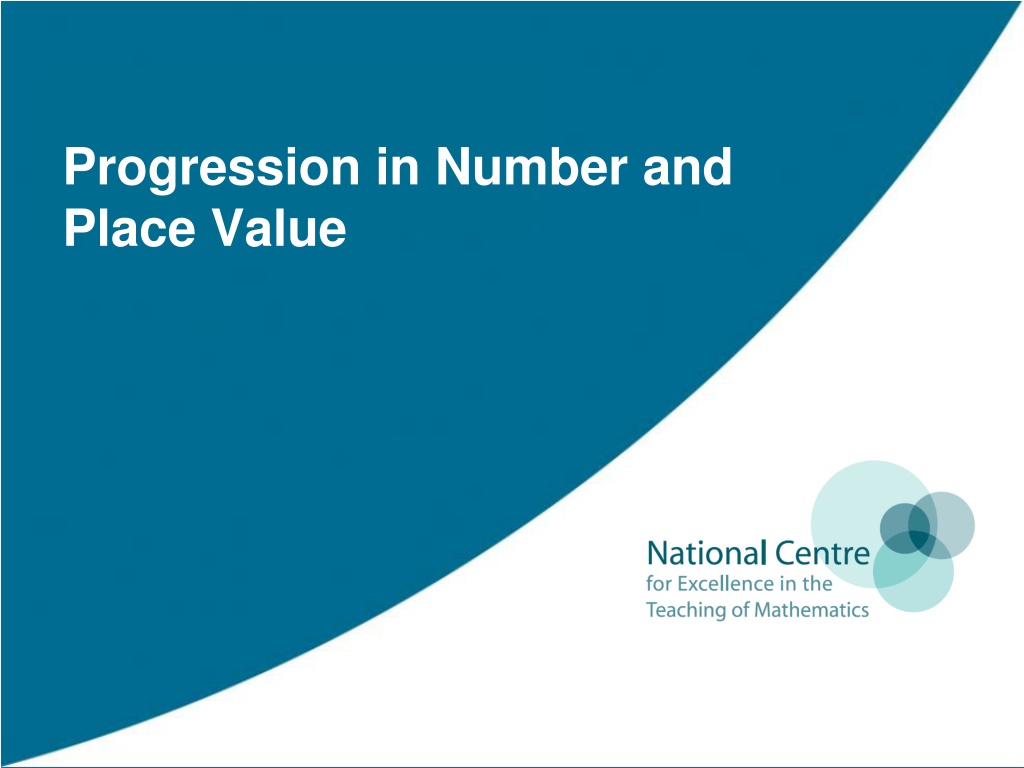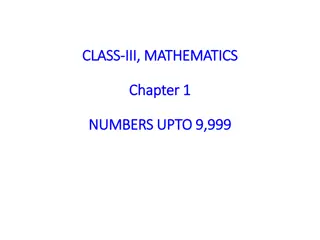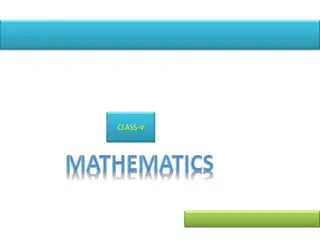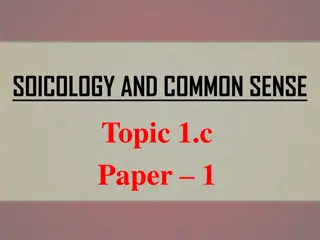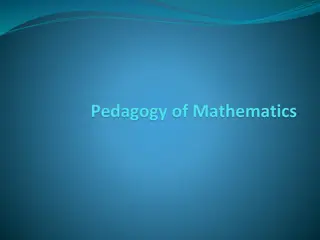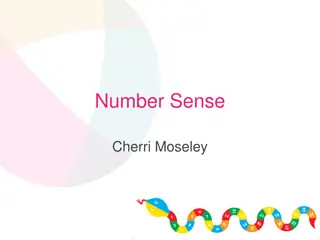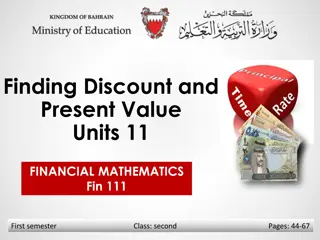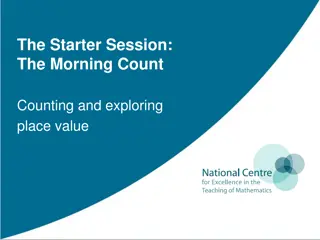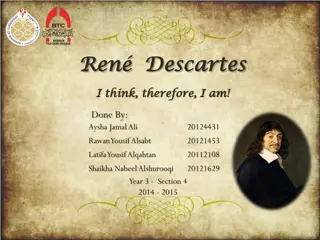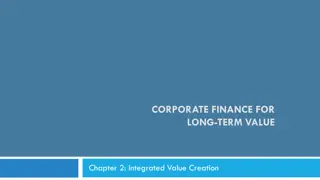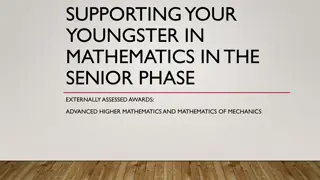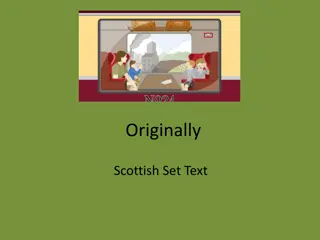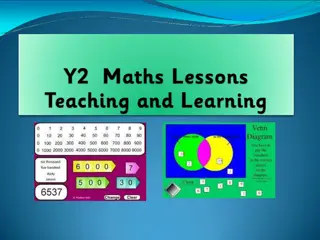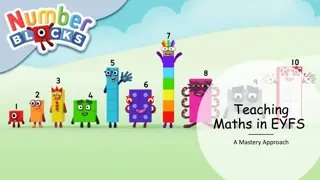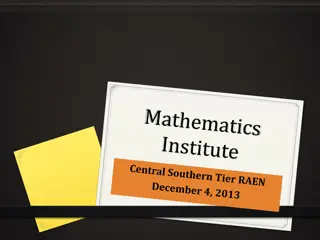Exploring Number Sense and Place Value in Mathematics Education
This educational content delves into the progression of number sense and place value, focusing on key concepts such as counting in steps, addition and subtraction strategies, fluency in counting, and the development of mathematical language. It highlights the importance of fostering flexibility and understanding in children's mathematical thinking, along with practical approaches and resources to support conceptual understanding. The content also addresses the link between counting and operations on the hundred square, encouraging reasoning and critical thinking skills in mathematical contexts.
Download Presentation

Please find below an Image/Link to download the presentation.
The content on the website is provided AS IS for your information and personal use only. It may not be sold, licensed, or shared on other websites without obtaining consent from the author. Download presentation by click this link. If you encounter any issues during the download, it is possible that the publisher has removed the file from their server.
E N D
Presentation Transcript
Progression in Number and Place Value
Areas addressed Number Sense and Place Value Key Stage 1 Counting in steps of one and ten Addition and Subtraction Key Stage 1 Partitioning in different ways Addition and Subtraction Key Stage 1 Using resources to develop fluency and understanding Subtraction Lower Key Stage 2 Partitioning 2
Counting in steps of one and ten Key Stage 1
Fluency and flexibility in counting Children need to develop flexible thinking in order to support the development of fluency in mathematics. How is Kate supporting the development of children s flexibility and fluency in counting on from any number? 4
Mathematical language Notice how Kate doesn t just count up and down the counting stick but introduces the language of more and less. How might this connect counting to addition and subtraction? 5
Whats the same? What s different? 11 12 13 What is the purpose of this activity? What conceptual understanding is being developed? What other resources might be used to support conceptual understanding? How is counting linked to addition on the hundred square? 6
Whats the same? What s different? 16 26 36 What is the purpose of this activity? What conceptual understanding is being developed? What other resources might be used to support conceptual understanding? How is counting linked to addition on the hundred square? 7
Reasoning about place value 16 26 36 Jamie says: The zero is behind the three sixes . Consider Jamie s explanation and his ability to reason mathematically. What can teachers do to support the development of mathematical reasoning? 8
Discussion in mathematics Consider the role of discussion in mathematics. How is discussion supporting the children s learning in the video? Notice the use of the teaching assistant to support and promote the discussion. 9
Addition and Subtraction Key Stage 1 Partitioning in different ways
Conjecturing and convincing You can only partition into tens and ones How does this activity support the development of children s ability to reason mathematically? (One of the three aims of the National Curriculum) Captain Conjecture 11
Partitioning in different ways What might be the purpose of partitioning in different ways and what examples of this are there in the video clip? Julie focuses in this lesson on partitioning into hundreds, tens and ones only. Her purpose is to prepare children for a column method, later in the lesson. 12
The idea of exchange How might partitioning and re-partitioning support children s understanding of exchange? Why is this understanding relevant to the subtraction method of decomposition? 13
Addition and Subtraction Key Stage 1 Using resources to develop fluency and understanding
A range of representations The teacher says that representations are crucial and that a range needs to be introduced. What are the relative merits of the representations used in this clip (straws, Dienes apparatus and bead strings) and why is a managed introduction of these important? 15
Developing place value How do the various representations used in this clip support the children s developing understanding of place value? In particular, note how the awareness, from one child, that a Dienes stick is one whole ten is significant for the teacher. 16
Subtraction Lower Key Stage 2 Partitioning Kibworth Video 1.1
Partitioning in different ways The teacher notes that the ability to partition in lots of different ways is useful for a range of calculation skills (in particular subtraction and division). What different ways of partitioning are useful and how does the teacher promote these? 18
Using pattern Note how the teacher encourages the children to spot and use patterns to help them generate different ways of partitioning numbers and also to work systematically. Consider the importance of pattern in mathematics. 19
